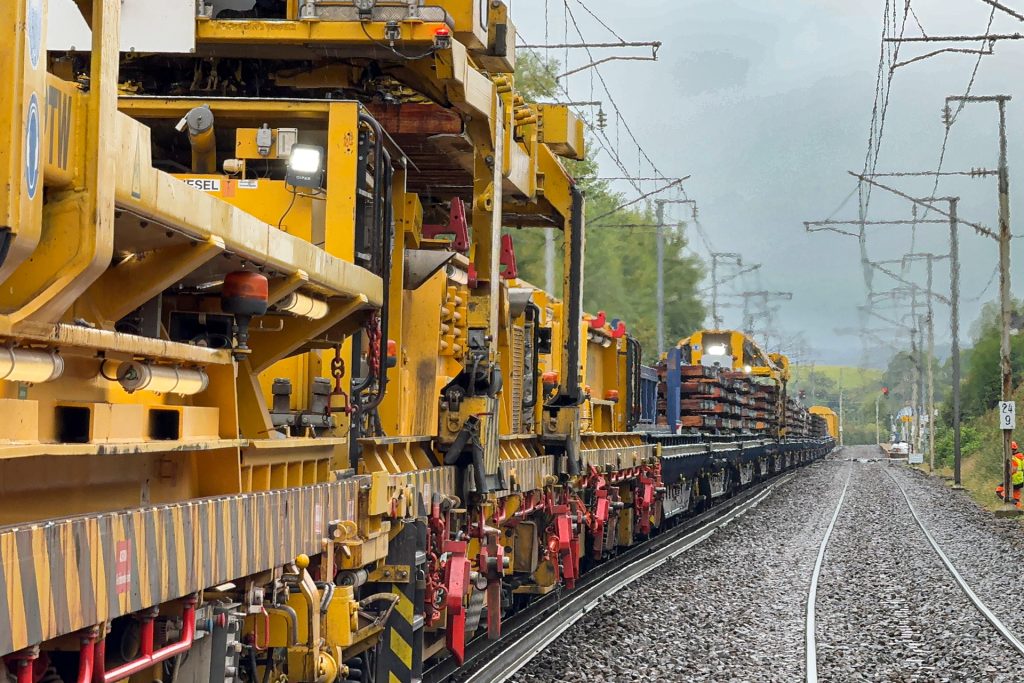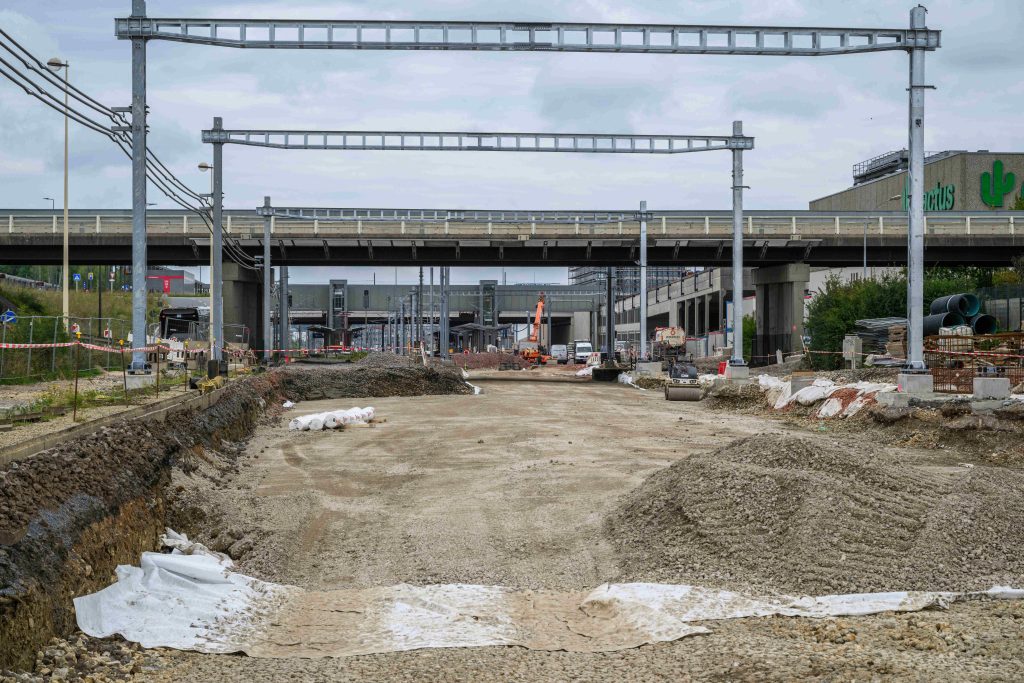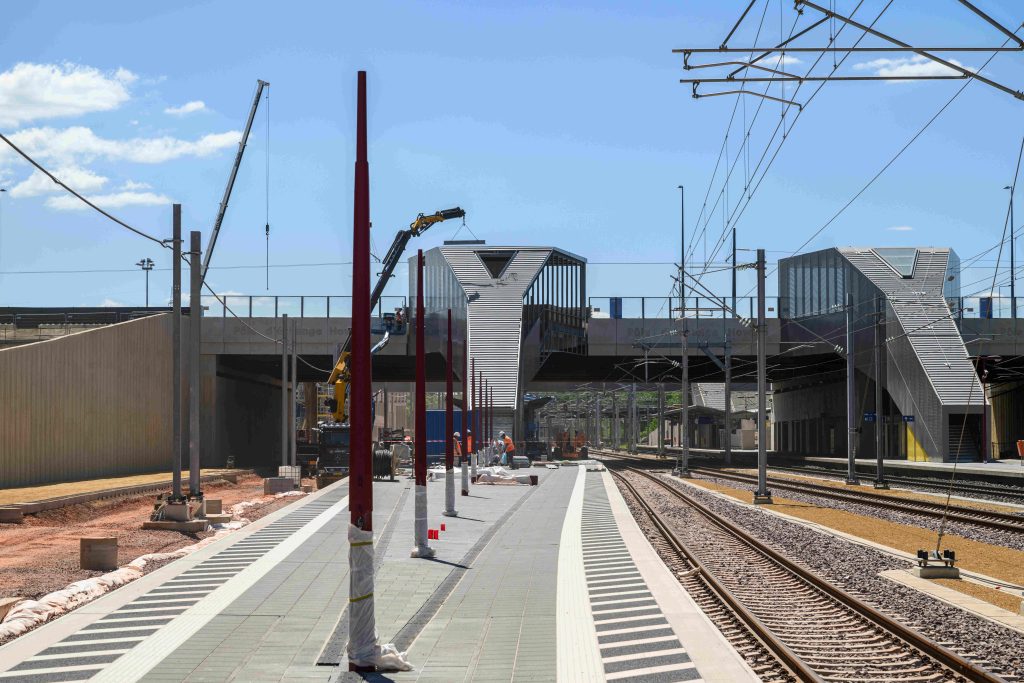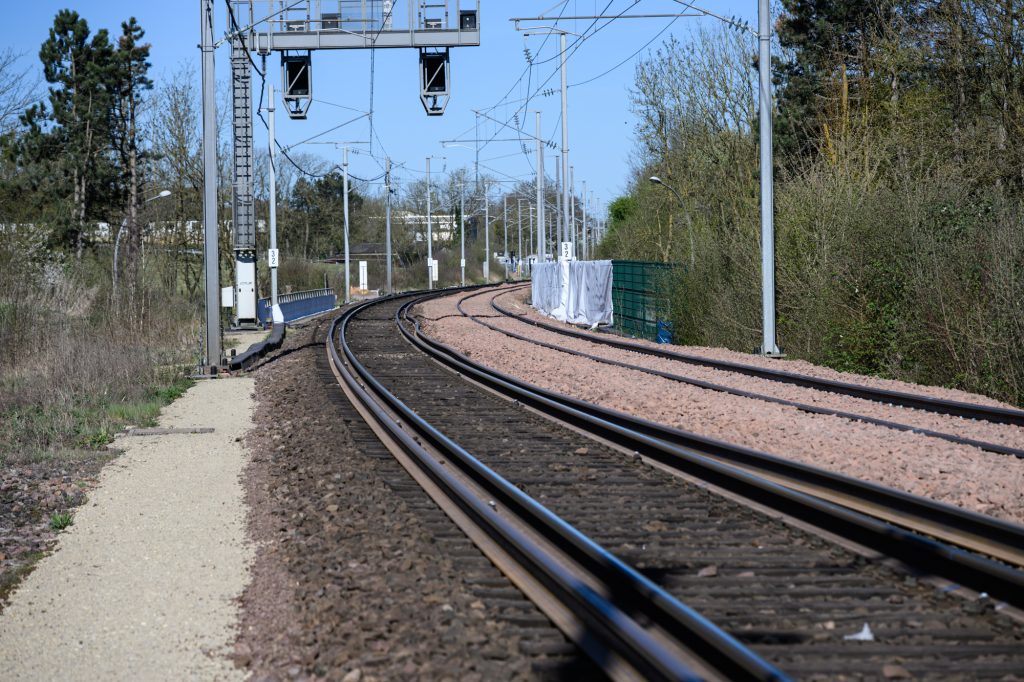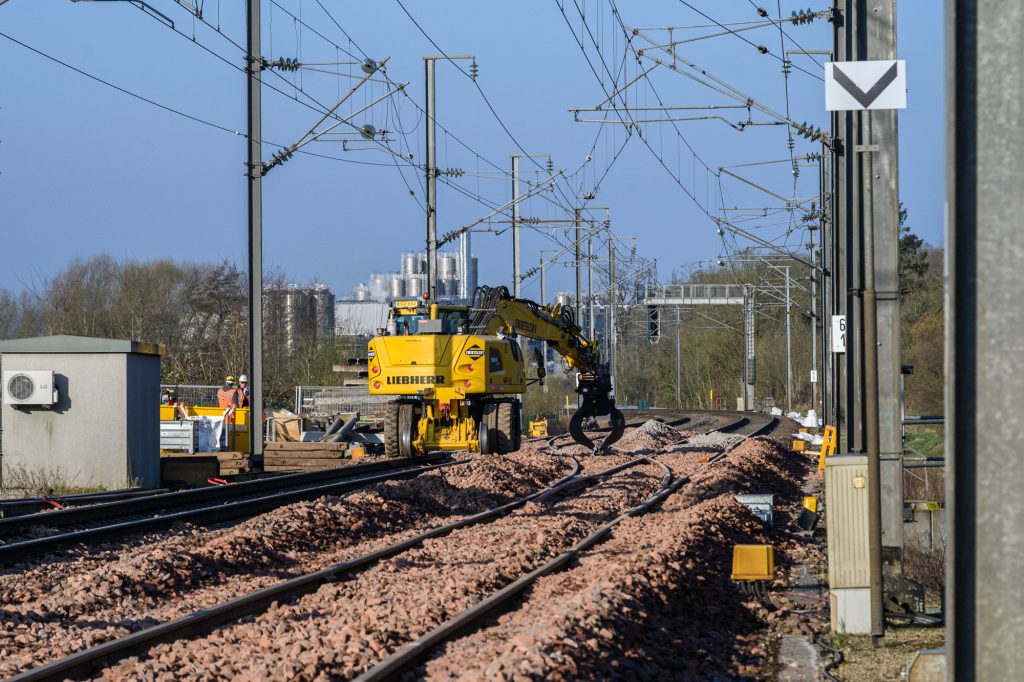
New railway line Luxembourg – Bettembourg: the construction works are going on swiftly
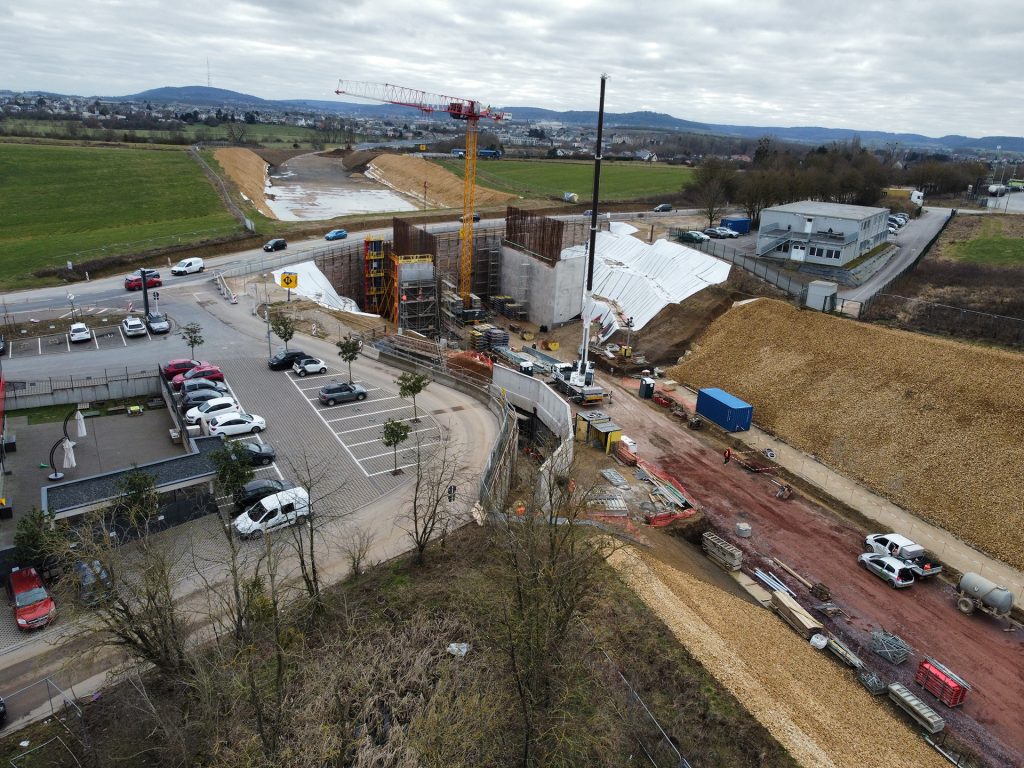
A new railway line is being built between Luxembourg and Bettembourg. However, laying two additional tracks is by no means the end of the story. For several years, the CFL, with the help of external partners in the construction sector, has been literally paving its way to the new line. No fewer than eight bridges are being built along the seven-kilometre stretch, including one of the largest bow-string railway bridges in Europe (we reported on the impressive structure here).
Another of these, the OA7 (Ouvrage d’Art 7, bridge in english), is currently under construction near Livange. By the end of 2024, this new railway underpass will carry road traffic on the N31 over the new line. Spectacular work that involves challenges in both civil and structural engineering.
700,000 cubic metres of earth on the move
“However, simply building a new bridge is not enough if a railway line is to pass underneath it later on,” explains Gilles, who is coordinating the work on different parts of the new line together with four other colleagues. For the railway line to be able to run from Luxembourg to Bettembourg and vice versa, a minimum clearance of 7 metres is required below the OA7 road bridge.

As trains can only climb small inclines, it is not possible to simply excavate earth at this particular point on the line. In order to achieve the goal of a maximum incline of 12.5‰ on the new line (1.25 vertical metres are overcome over 100 metres of track), the earthmoving work extends over several kilometres (before and after the structure). In total, the earthmoving work on the new line represents a volume of well over half a million cubic metres. This corresponds up to the load of around 70,000 lorries.
Two embankments for the new railway underpass
Two embankments of the OA7 frame structure have been poured in concrete in the recent past. These both have impressive key data: 12 metres high, 23 metres wide and over 1 metre deep.
400 cubic metres of concrete have been necessary to give the embankments their shape thanks to the skilfully crafted formwork. Not an easy endeavour when perfect results are absolutely essential. The pressure and quantity of concrete must be constantly monitored to prevent any damage. In order not to exceed the maximum permissible formwork pressure, concreting was carried out at a predefined speed. The formwork pressure was also constantly monitored with the help of precisely positioned sensors.
The construction of the road surface, over which two lanes, two pavements and two hard shoulders will run towards the end of the year, will then begin in subsequent stages.
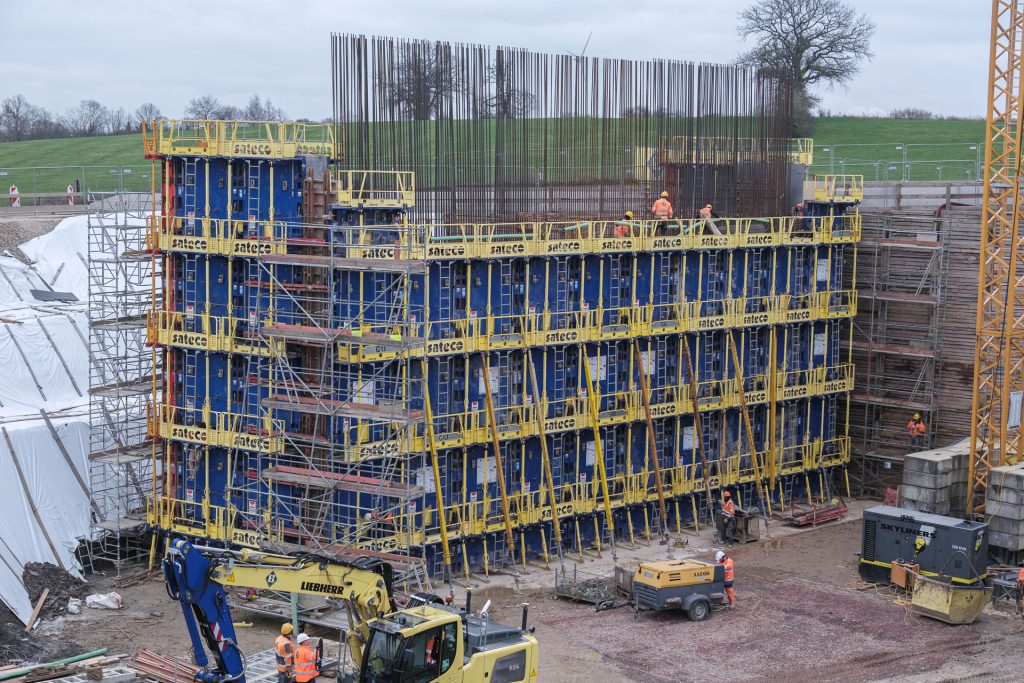
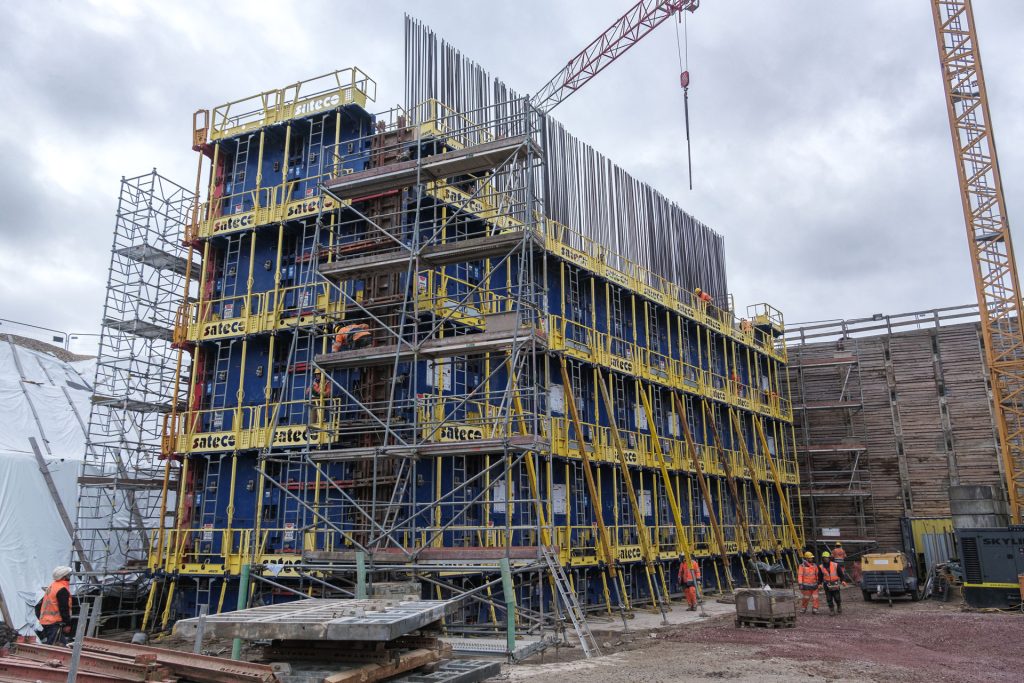
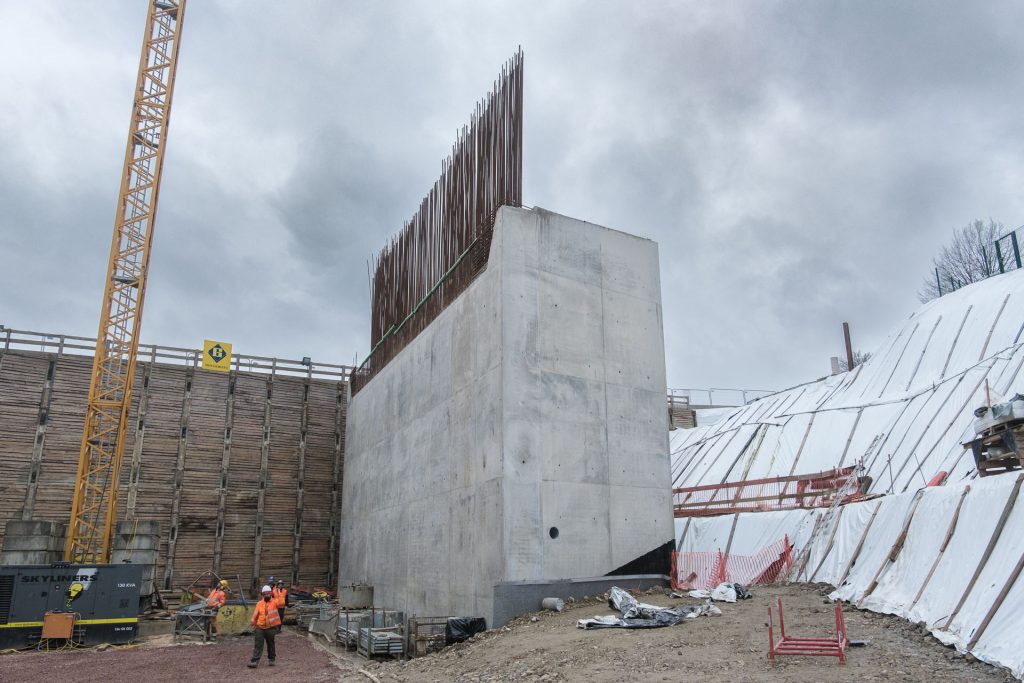
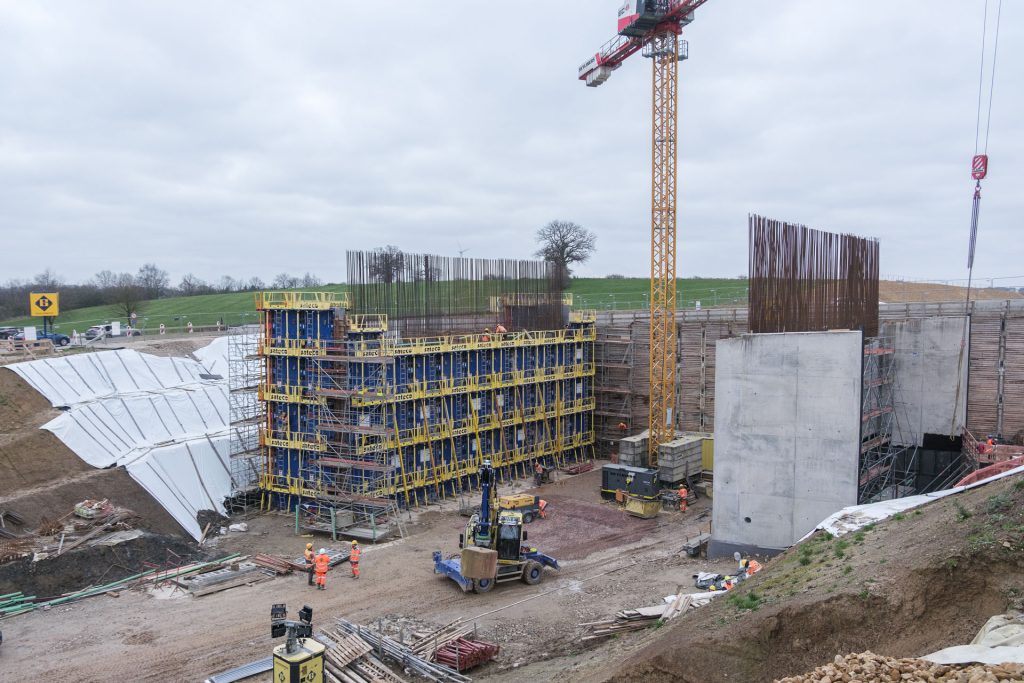
Work on the road itself is also being carried out
Numerous preparations are necessary to ensure that everything is in place when track construction begins. A stable foundation is essential for the construction of a new railway line, which also runs through a flood plain near water sources. In 2024, the tamping work that began last year will therefore continue – because only a stable platform can provide a secure foundation for a line that will one day be used by up to 8 trains per hour travelling to or from France.
From the point where the new line crosses the existing line between Luxembourg and Bettembourg at altitude (we reported here on the so-called overpass structure) to just before the “Aire de Berchem”, extensive ground improvements are necessary. One of the reasons for this is the nearby “Bibeschbaach”. To ensure that the necessary soil strength can still be guaranteed, the soil will be reinforced with more than 1,000 displacement concrete columns on the one hand and compacted with so-called vibrating tamping columns on the other. Over 3,000 of these vibrating tamping columns are planned for the almost two-kilometre-long section. A further 200 or so are still outstanding and will be carried out shortly.

What happens next?
In addition to the bridge work on the OA7 and the earthmoving and foundation work described above, further preparatory work is being carried out. This includes the construction of foundations for overhead partitions and signals, as well as the laying of cable and water shafts along the line. Almost 150 kilometres of cable will be laid to enable the functions of signalling, radio and switches. Closed and open water channels will also ensure that there will be no flooding on the future track. Once the earthmoving and foundation work has been completed, work will also begin on preparing the track bed over the course of next year. An impressive 70,000 tonnes of ballast will be distributed along the seven-kilometre route.
We will continue to follow the progress and development of the work and provide you with interesting insights into the fascinating world of the new railway line on the CFL Blog.


